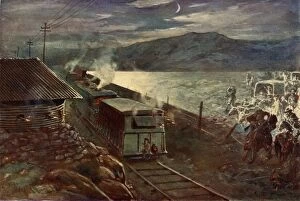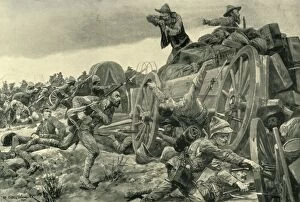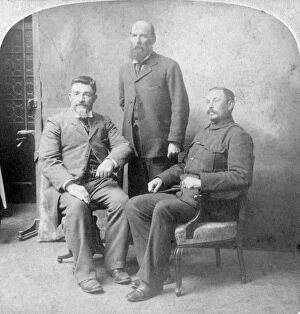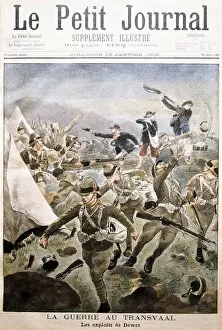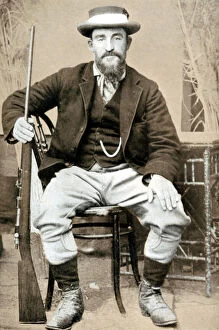Christiaan Rudolf De Wet Collection
Christiaan Rudolf de Wet, a prominent figure in the Boer War and Afrikaner history, is captured in various moments throughout his life
For sale as Licensed Images
Choose your image, Select your licence and Download the media
Christiaan Rudolf de Wet, a prominent figure in the Boer War and Afrikaner history, is captured in various moments throughout his life. In "De Wets Attempt to Cross the Railway, " we witness his determination as he strategizes with unknown comrades. The image captures the intensity of their mission. "The Capture of De Wets Convoy at Reitz" showcases a significant event where De Wet's convoy falls into enemy hands on June 6, 1901. This photograph immortalizes the turning point that led to his capture. In "The Reddersburg Mishap, " we see men from the Irish Rifles and Mounted Infantry surrendering their arms after an unfortunate incident. It highlights De Wet's influence over soldiers who respected him enough to lay down their weapons. "The Disaster at Koornspruit" depicts driverless teams stampeding uncontrollably, symbolizing chaos during wartime. This scene serves as a reminder of the dangers faced by both sides involved in this conflict. A portrait simply titled "De Wet" reveals our subject standing tall and proud amidst turbulent times. His unwavering spirit shines through despite adversity surrounding him. Accompanied by other Boer commanders in South Africa during the war, De Wet demonstrates leadership qualities essential for survival and success on unfamiliar terrain. An attack on a British encampment at Tweefontein further exemplifies De Wet's military prowess and strategic brilliance during battle. These actions solidify his reputation as a formidable opponent against British forces. Beyond being known solely for his military achievements, Christiaan de Wet was also recognized for his political involvement and passion for big game hunting—an intriguing combination that adds depth to his character. At Melrose House in Pretoria, Transvaal Colony, South Africa, we witness an iconic moment when peace negotiations brought together influential figures such as General Louis Botha and Horatio Herbert Kitchener alongside Christiaan Rudolf De Wet.

